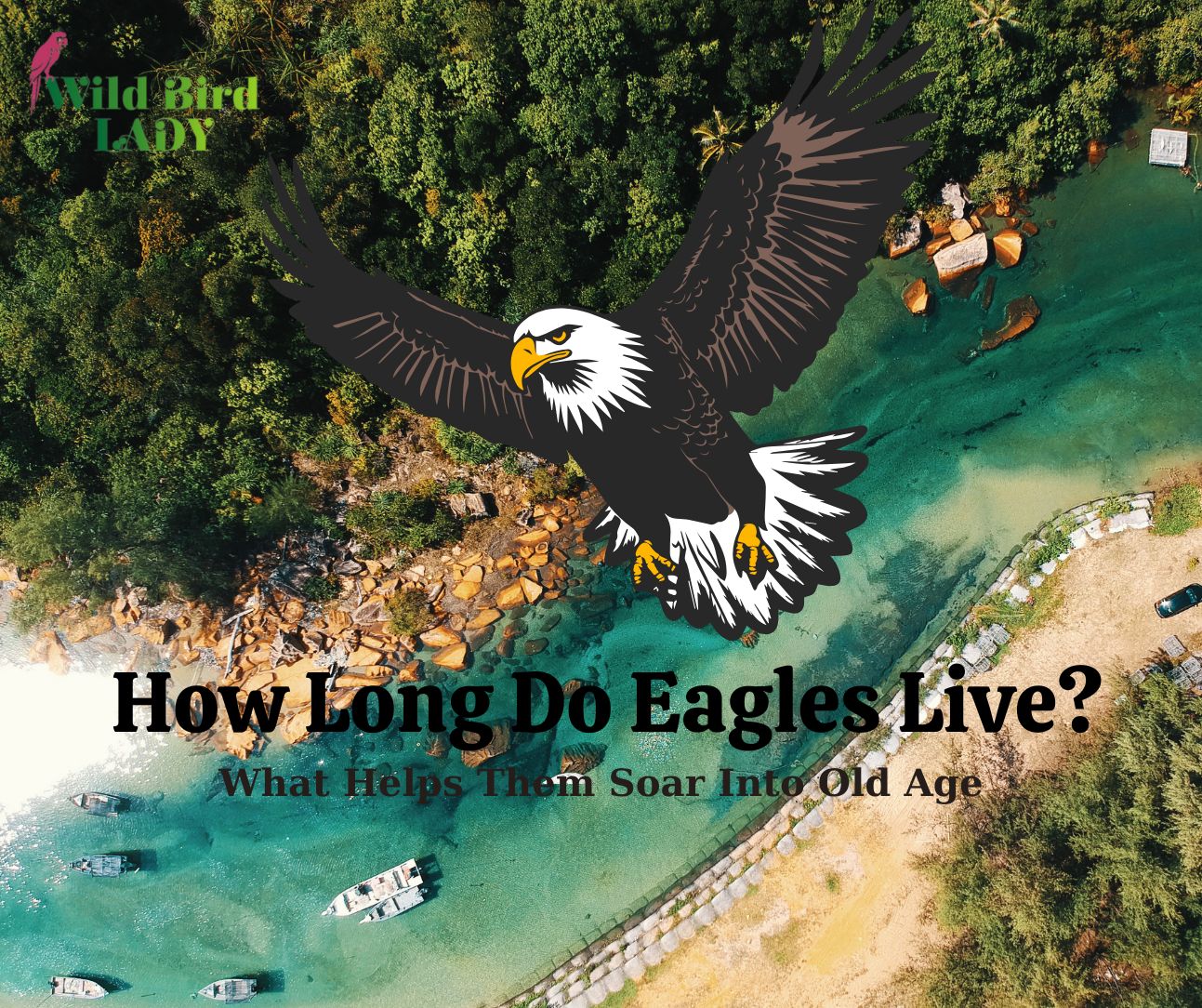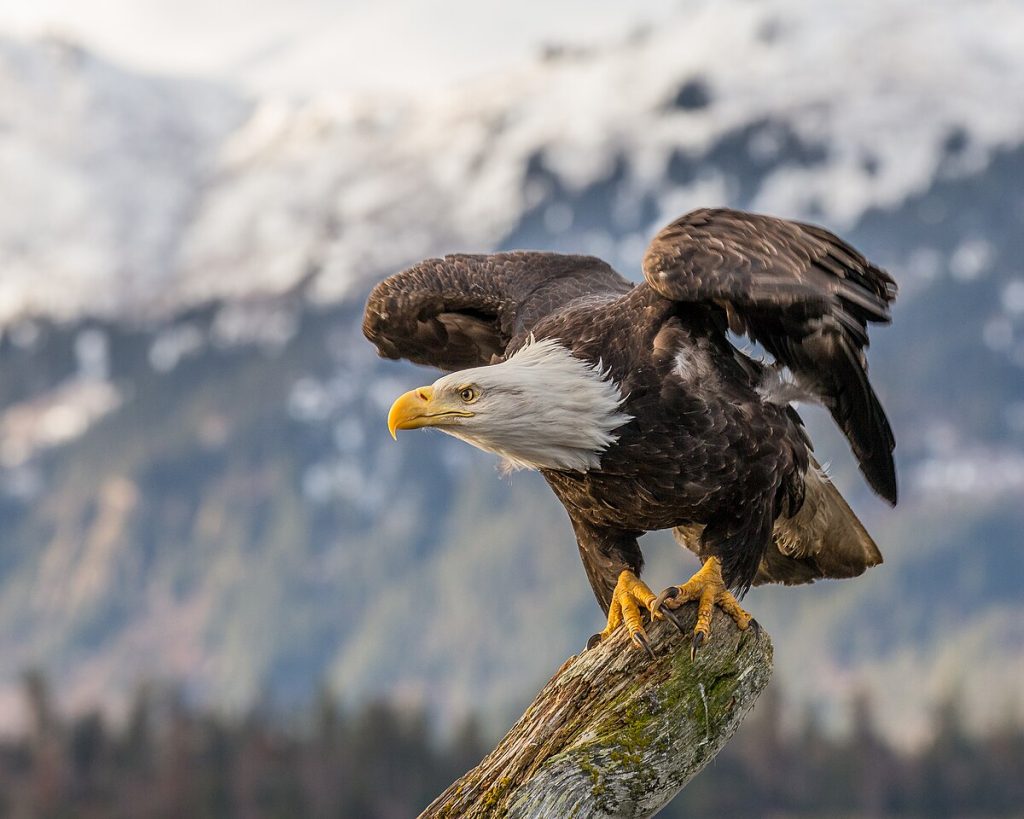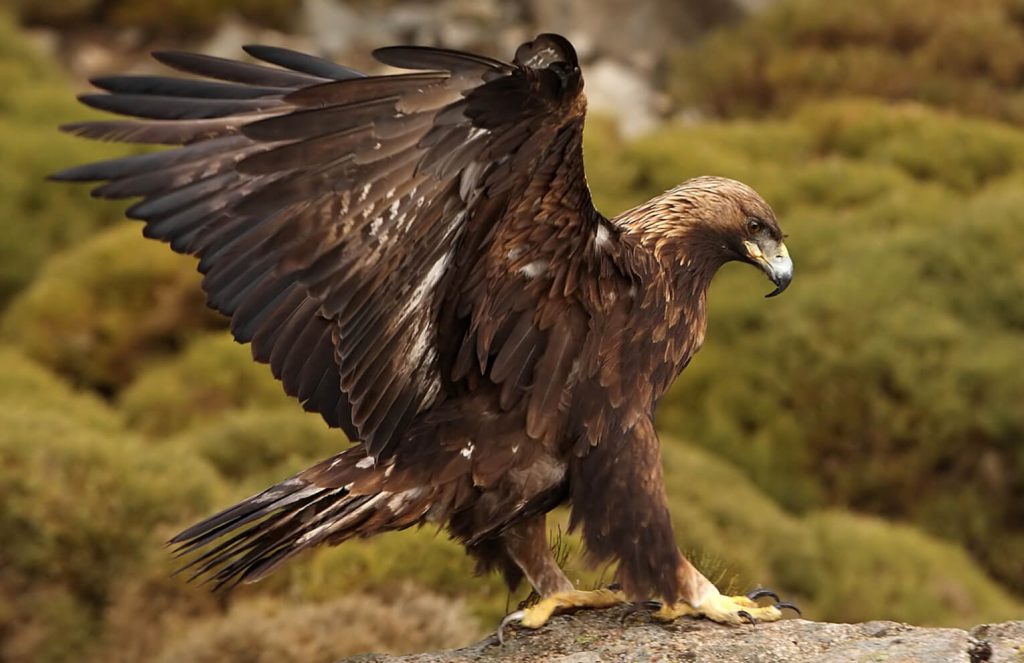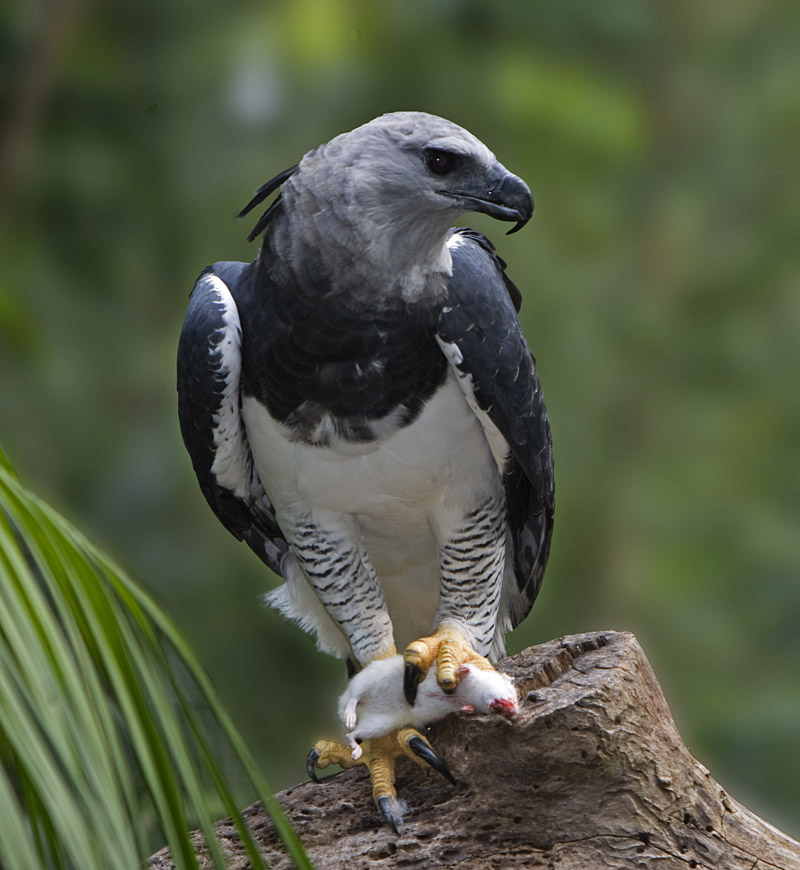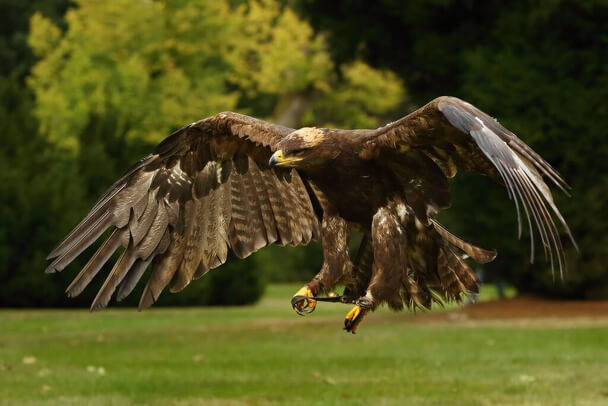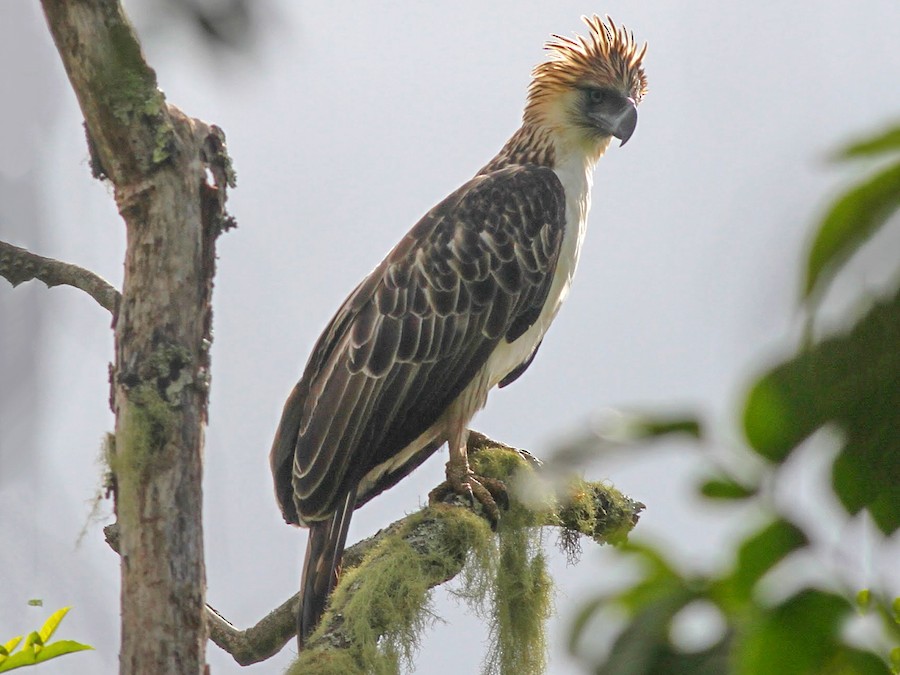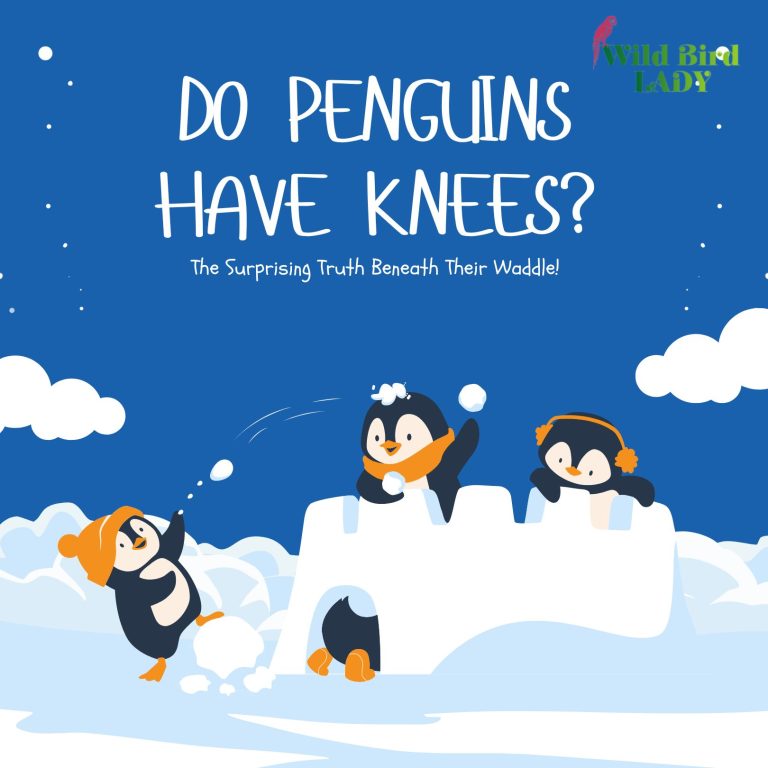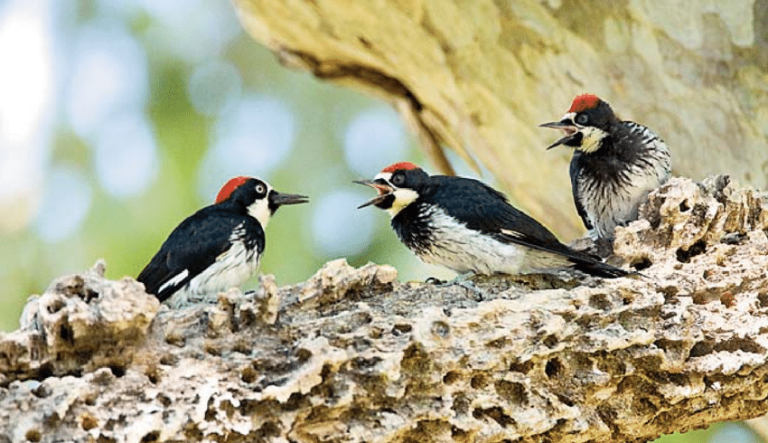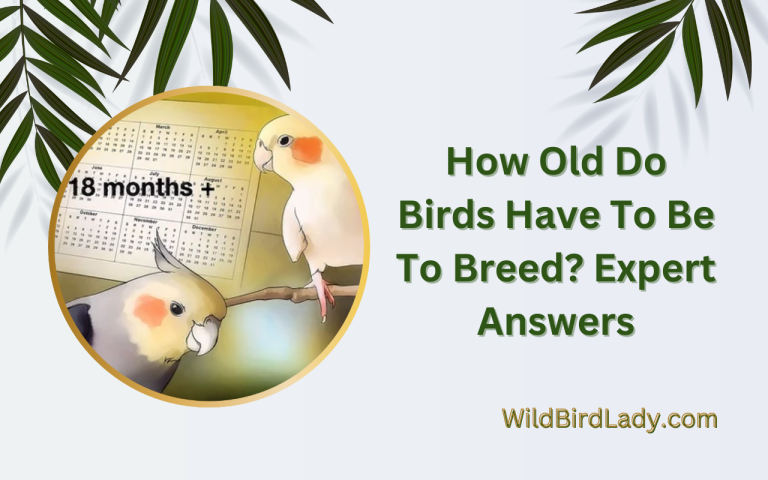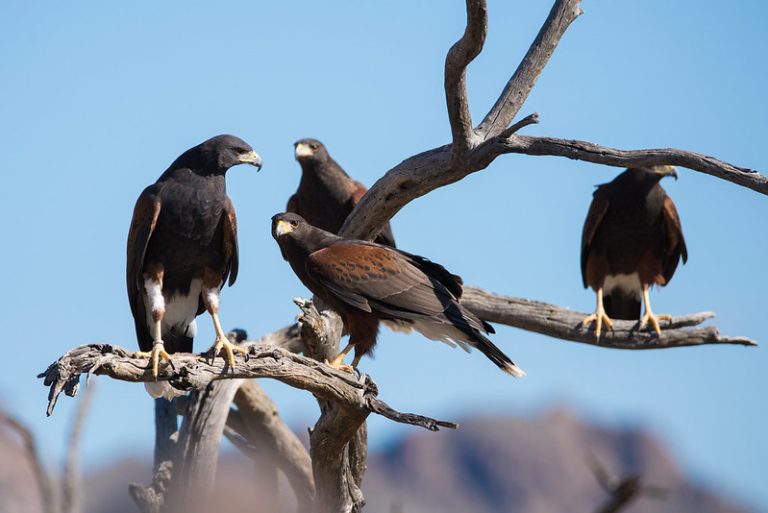How Long Do Eagles Live? (And What Helps Them Soar Into Old Age)
Eagles are majestic birds that have fascinated humans for centuries. With their powerful wings, piercing eyes, and incredible hunting skills, they symbolize freedom, strength, and vision. But beyond their iconic image, many people wonder: how long do eagles live? The answer may surprise you.
In this article, we’ll explore the average lifespan of different eagle species, the factors that influence their longevity, and what helps these raptors soar into old age. Whether you’re a bird enthusiast, wildlife educator, or simply curious, this comprehensive guide is for you.
Quick Answer: How Long Do Eagles Live?
- In the wild, most eagles live between 20 to 30 years.
- In captivity, eagles can live up to 50 years or more with proper care.
- The Bald Eagle and Golden Eagle are the most studied, with lifespans averaging 25 years in the wild.
But let’s not stop at just numbers — let’s dive into what affects an eagle’s lifespan and how some manage to live well beyond the average.
Eagle Lifespan by Species
Different eagle species have different lifespans, depending on size, habitat, diet, and environmental pressures. Here’s a breakdown of some of the most well-known eagles:
🦅 Bald Eagle (Haliaeetus leucocephalus)
- Wild lifespan: 20–30 years
- Captive lifespan: Up to 50 years
- Notable record: A captive bald eagle lived 50+ years at a bird sanctuary in New York.
🦅 Golden Eagle (Aquila chrysaetos)
- Wild lifespan: 25–30 years
- Captive lifespan: Up to 45 years
- Notable record: A tagged wild Golden Eagle lived to be over 30.
🦅 Harpy Eagle (Harpia harpyja)
- Wild lifespan: 25–35 years
- Captive lifespan: Around 40 years
- Fun fact: One of the largest eagles in the world by body mass.
🦅 Steppe Eagle (Aquila nipalensis)
- Wild lifespan: 20–25 years
- Captive lifespan: 35–40 years
- Conservation status: Threatened by habitat loss and electrocution.
🦅 Philippine Eagle (Pithecophaga jefferyi)
- Wild lifespan: 30–40 years (estimated)
- Captive lifespan: Over 40 years
- Note: One of the rarest and most endangered raptors.
Why Do Some Eagles Live Longer Than Others?
The lifespan of an eagle depends on several factors — some within their control, others not. Let’s explore what helps or hinders their longevity.
1. Species and Genetics
Some species are naturally long-lived. Larger eagles, like the Harpy or Golden Eagle, tend to live longer due to their slower metabolism and fewer natural predators.
2. Habitat and Range
Eagles that live in protected, less disturbed habitats face fewer threats like pollution or human conflict. For example, Bald Eagles in Alaska often outlive those in more urbanized states.
3. Availability of Food
A steady, rich food supply ensures better health and less energy wasted on hunting. Eagles that feed near rivers, coasts, or large forests tend to thrive.
4. Human Impact
Threats such as:
- Lead poisoning from bullets in prey
- Electrocution on power lines
- Habitat destruction
- Illegal hunting
…all reduce eagle survival in the wild.
5. Captive Care
Eagles in rehabilitation centers, zoos, and sanctuaries benefit from:
- Regular veterinary care
- Balanced diets
- Protection from predators and disease
This leads to longer, often healthier lives.
How Do Eagles Age?
You might not notice an old eagle just by looking — they don’t get gray feathers or wrinkles like humans. However, here are some signs of aging in eagles:
- Slower flight or less frequent soaring
- Reduced hunting success
- Worn-down beak or talons
- Less frequent breeding activity
Despite this, many elderly eagles remain active well into their final years — a testament to their resilience.
Lifespan: Wild vs. Captivity
| Environment | Average Lifespan | Main Benefits/Challenges |
|---|---|---|
| Wild | 20–30 years | Natural behavior, but more threats |
| Captivity | 40–50 years | Safer, but less freedom |
Captivity can extend an eagle’s life, but it may come with trade-offs in terms of flight and hunting freedom. Ethical conservation centers aim to mimic wild conditions as much as possible.
How Do Young Eagles Survive to Adulthood?
Surviving the first few years of life is one of the biggest challenges an eagle will ever face. While adult eagles are powerful, skilled hunters with few natural predators, their early lives are fraught with danger. In fact, the mortality rate among young eagles is astonishingly high — and understanding why is key to appreciating just how remarkable their journey to adulthood really is.
🐣 Sibling Rivalry: The Harsh Reality of Siblicide
Eagles usually lay one to three eggs, but it’s rare for all chicks to survive. In many species, especially the Bald Eagle and Golden Eagle, the first chick to hatch gains a physical and psychological advantage over its siblings. It’s slightly larger, stronger, and hungrier.
This leads to a brutal phenomenon known as “siblicide” — where the dominant chick attacks or outcompetes its nest mates for food. Often, the weaker chick dies from starvation, injuries, or neglect. This may sound harsh, but from a biological standpoint, it increases the survival odds of at least one healthy chick when food is scarce.
In some years with abundant prey, more than one chick might fledge successfully. But more often than not, only one eaglet per nest survives.
🪶 The Perils of First Flight
For those who do survive the nest, the next big hurdle is fledging — leaving the nest and learning to fly. Young eagles typically fledge between 10 to 14 weeks of age. While their wings are strong, their flying skills are unpolished, and crashes are common.
During this learning period, young eagles are especially vulnerable to:
- Predators like raccoons, bobcats, or even other raptors.
- Falls and collisions with trees, cliffs, or man-made structures.
- Starvation, as they are still learning how to hunt and fend for themselves.
Many juvenile eagles die in the first 6–12 months of life, never fully mastering the skills they need to survive independently.
🌧️ Environmental Pressures
Weather can also be a deadly factor. Heavy storms, intense heatwaves, or prolonged droughts can reduce food availability or physically displace chicks from nests. Additionally, human interference — such as cutting down nesting trees, flying drones nearby, or using pesticides — can increase the risk of mortality.
In urban and suburban areas, eaglets may face threats from power lines, vehicles, or polluted water sources. In some regions, young eagles have even died after ingesting poisoned or contaminated prey.
📉 The Grim Statistics
Researchers estimate that as few as 1 in 10 eaglets born in the wild survive to reach adulthood. It’s a sobering number — and a testament to how challenging early eagle life is. This bottleneck shapes the population growth of eagle species worldwide, especially those already endangered or threatened.
🎯 Survival Beyond Year Five
Here’s the good news: once an eagle survives the first five years, its chances of living a full, long life increase dramatically. By this age, an eagle:
- Has fully developed flight and hunting skills.
- Has likely established a territory.
- May be ready to mate and raise young of its own.
- Can outlive many of its former risks.
Some species, like the Golden Eagle, don’t even begin to breed until age 5 or 6. But the payoff for surviving those perilous early years is high — many go on to live two or even three decades longer.
What Helps Eagles Soar Into Old Age?
Want to know what gives these birds their edge? Here’s what contributes to a long eagle life:
✅ Powerful Immune Systems
Eagles have evolved to survive injury and illness in the wild. Their strong immune response helps them fight parasites and infection.
✅ Efficient Hunting Skills
Older eagles develop better hunting strategies, wasting less energy and avoiding injury.
✅ Favorable Territory
A safe, food-rich territory with minimal human interference ensures long-term survival.
✅ High Nest Site Loyalty
Many eagles return to the same nest every year, avoiding the stress of relocation and competition.
✅ Legal Protection
Thanks to laws like the Bald and Golden Eagle Protection Act, these birds have a fighting chance at survival.
🦅 Conservation Success Stories: The Bald Eagle Comeback
Few conservation stories are as inspiring — or as symbolic — as the comeback of the Bald Eagle (Haliaeetus leucocephalus), America’s national bird. Once teetering on the edge of extinction, the Bald Eagle has made a remarkable recovery over the last six decades, proving that dedicated environmental action can truly change the course of nature.
📉 A National Symbol in Crisis
Back in the mid-20th century, the outlook for Bald Eagles was bleak. By 1963, scientists recorded just 417 known nesting pairs in the entire lower 48 states. From Alaska to Florida, the skies were growing quieter. The majestic raptors that once soared over rivers and forests were vanishing — and fast.
Several factors were driving the decline:
- Widespread use of DDT, a pesticide that thinned eggshells, leading to failed hatchings.
- Habitat destruction due to logging, urban expansion, and pollution.
- Illegal hunting and poaching, including trophy killings.
- Lack of legal protection, allowing their nests to be disturbed or destroyed without consequence.
The situation was dire. For many, the Bald Eagle’s fate was seen as a reflection of humanity’s impact on the environment — and a call to action.
🔁 Turning the Tide: Law, Science & Public Will
The Bald Eagle’s dramatic recovery is the result of a powerful combination of efforts that came together just in time:
🧪 DDT Ban (1972)
One of the most pivotal moments in eagle conservation came with the U.S. ban on DDT in 1972. The pesticide had been wreaking havoc on raptors across the country, including ospreys, peregrine falcons, and eagles. Once banned, eagle reproduction rates began to climb as eggshell thickness returned to normal.
📜 Endangered Species Act (1973)
The passage of the Endangered Species Act (ESA) in 1973 gave Bald Eagles federal protection. This meant:
- Strict penalties for harming or disturbing eagles or their nests.
- Critical habitat designations.
- \Funding for recovery programs.
The Bald Eagle was officially listed as endangered, making it a top conservation priority.
🐣 Captive Breeding and Rehabilitation
In areas where wild populations had disappeared entirely, captive breeding programs helped reintroduce Bald Eagles into suitable habitats. Wildlife rehab centers cared for injured or orphaned eagles, many of which were later released back into the wild.
States like Minnesota, Florida, and Alaska became strongholds for eagle reintroduction and population management.
📢 Public Education and Stewardship
Citizens, schools, and nonprofits rallied around the Bald Eagle. Educational campaigns taught people not only how to protect these birds but also how to report sightings, support nest monitoring, and donate to conservation programs.
What was once just a national symbol became a shared national responsibility.
📈 The Numbers Tell the Story
The results of these combined efforts are nothing short of extraordinary:
| Year | Estimated Nesting Pairs (Lower 48) |
|---|---|
| 1963 | 417 |
| 1990 | ~5,000 |
| 2007 | 10,000+ (Delisted from Endangered List) |
| 2020 | Over 71,000 pairs |
That’s a 17,000% increase in less than 60 years — a population rebound that few thought possible.
In 2007, the Bald Eagle was officially removed from the federal endangered species list. Yet it remains protected under the Bald and Golden Eagle Protection Act, ensuring continued stewardship.
🌍 A Ripple Effect for Other Species
What makes this comeback even more powerful is its wider ecological impact. The conservation infrastructure built to save Bald Eagles — from habitat protection to pollution control — has helped countless other species as well.
Wetlands, forests, and rivers preserved for eagles have become safe havens for:
- Herons
- Ducks and geese
- Otters
- Freshwater fish
- And many migratory bird species
Protecting an apex predator like the eagle means protecting the entire food web beneath it.
🧭 The Bald Eagle: A Conservation Icon
The Bald Eagle’s story reminds us that extinction is not inevitable — and that nature can recover if we give it the chance. Through bold policy, public action, and scientific resolve, we turned one of America’s greatest ecological tragedies into a powerful example of hope.
Today, spotting a Bald Eagle in flight isn’t a rare miracle. It’s becoming a regular thrill — from national parks and coastal estuaries to rivers near your own backyard.
That’s the power of conservation done right.
That’s what helps eagles — and ecosystems — soar into the future.
How You Can Help Eagles Live Longer
Love eagles? Here’s how you can make a difference:
🛑 Avoid Lead Ammunition
Hunters switching to lead-free ammo prevent eagles from ingesting toxic lead from carcasses.
🌲 Protect Nesting Habitats
Support reforestation and oppose unnecessary land development near eagle habitats.
📷 Observe Respectfully
Don’t disturb nests or use drones near roosting areas — stress can be deadly for chicks and parents.
🐟 Keep Waterways Clean
Pollution affects fish, which are a major food source for many eagle species.
💰 Donate to Conservation Groups
Support reputable organizations like:
- American Eagle Foundation
- Raptor Research Foundation
- The Peregrine Fund
Frequently Asked Questions
Do eagles die of old age?
Yes, though most die from injury, disease, or predation before reaching their full lifespan, especially in the wild.
What is the oldest eagle ever recorded?
A captive Bald Eagle named “Challenger” lived over 50 years under human care.
How long can eagles fly?
Eagles can soar for hours thanks to thermal currents — Golden Eagles have been recorded gliding for up to 100 miles a day.
Final Thoughts
So, how long do eagles live? It depends on their species, environment, and a bit of luck. While most live 20 to 30 years in the wild, some can soar into their 40s or 50s in captivity.
These regal birds continue to inspire us with their strength and longevity. As stewards of the planet, the more we understand and protect eagles, the more likely they are to keep soaring for generations to come.
If you found this article helpful, share it with fellow bird lovers — and help the legacy of eagles live on.

